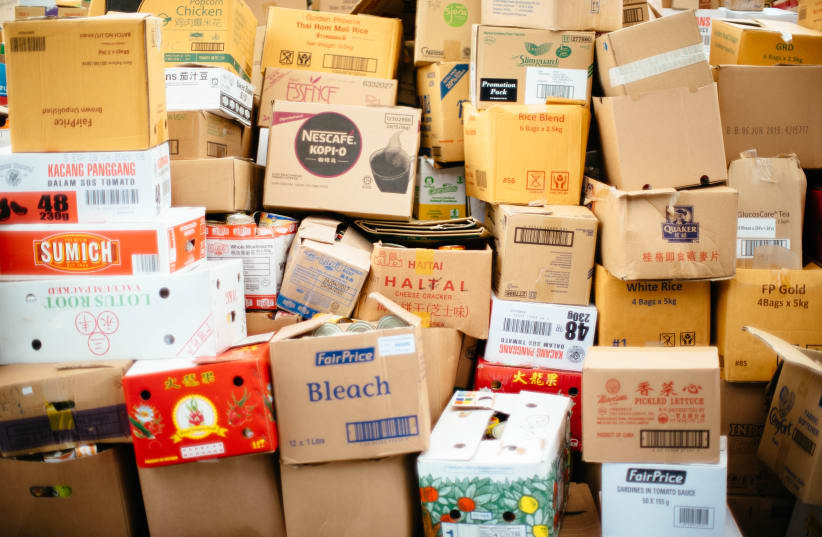My home office space had gotten cluttered. That was fine when most of the article interviews I conducted were over the phone. But as COVID-19 led to the rise of video conferencing for, well, everything, suddenly I found the visual range of my computer’s camera showed my over-accumulation of “stuff.”
There was the stack of obsolete computer equipment sitting on top of a filing cabinet; a collection of aging media (audio cassettes with no working cassette recorder to play them, dusty CD-ROMs and even floppy disks); and piles upon piles of papers – annual summaries from my accountant, product-design documents from 30 years ago and, most of all, thousands of newspaper clippings I had obsessively stockpiled from age 10 until today.
All of these were packed into a dozen plastic boxes that had created an unattractive view my Zoom respondents could now see.
I’ve not had a lot of free time over the past year of pandemic, but there was one point over the summer that I had a momentary break from my usual workload.
I decided to use this as an opportunity to tackle the junk.
Anti-clutter guru Marie Kondo instructs followers to touch an item, and if it doesn’t “spark joy,” discard or donate it.
None of these items particularly sparked joy for me – what enjoyment can you get from a tape you can’t play? – but the nostalgia factor was too much to make this a simple endeavor. The newspaper clippings in particular – these are visceral reminders of what was important to me 10, 20, 40 years ago. How would I remember all of that if I tossed years of saving?
And yet the clippings had remained in their boxes for so long, the chances that I’d ever review them were slim. Maybe when I retire, but nah, probably not then either.
This is not the first time I’ve had to consider what to do with my memorabilia. In 2007, my parents moved from the home where I grew up into a smaller apartment in a retirement community.
I ended up minimizing from the 31 boxes stashed in my childhood closet to just four cartons of the most important documents, which I shipped to Israel.
I haven’t looked at them since.
“How is a museum like Smaug?” asks Malcolm Gladwell in his podcast, Revisionist History, referring to the dragon from The Lord of the Rings.
Both are hoarders. They derive meaning from things being in their possession, even if they have no interest in “doing” anything with the treasure.
New York’s Metropolitan Museum of Art, for example, owns more than two million works in total – 75% of which are settled in storage.
A MUSEUM MIGHT be expected to hold onto art, but what about the woman who hoards empty ATM envelopes? The woman had written on each envelope what she spent the money on, Gladwell reports, and the thought of throwing them away brought her to tears.
“It feels like I’d be losing that day in my life,” she explained. “If I lose too much, there will be nothing left of me.”
There’s a difference between hoarding and clutter. A hoarder amasses large amounts of items that have little value.
“They don’t have one can opener, they have 40,” says Regina Lark of the National Association of Professional Organizers. Collectors, on the other hand, receive real pleasure from their stuff.
Ask yourself, “Does your stuff prevent you from having people over or having enough money?” writes Paula Spencer Scott for WebMD. “Are you late paying bills because you can’t find your bills?”
For my 2020 attempt at minimizing, I had an idea about how to preserve memory while simultaneously freeing up space. For anything I planned on throwing out, I would first write down a description on my computer. For newspaper articles, that would be the title, author and date of each. If the piece was online, I’d include the URL in my entry.
What topics captivated my attention over the years?
In the 1970s, it was movies and music – reviews of concerts I attended, from the Tubes to Pink Floyd and ELO – with a solid smattering of politics. (Remember John Anderson’s presidential campaign?)
By the 1980s and 1990s, I was already living in Israel, so my attention became more local.
There were inklings of where my religious sensibilities would evolve (an article critical of Orthodoxy entitled “By modesty obsessed”); food (“Yuppie falafel”); terror (“Dating in difficult times,” on romance during the Second Intifada, eerily appropriate for pandemic times); a decade’s worth of taste tests of Jerusalem’s best Hanukkah sufganiyot; and Shlomo Brody’s “Ask the Rabbi” column in The Jerusalem Post (“Do demons exist?”).
I was making good progress and had managed to discard several garbage bags full of clippings when, alas, time was up. New assignments came in, my workload returned to normal, and it hasn’t let up since.
I moved the remaining boxes to a corner in my office so they were hidden from Zoom, waiting for the next downturn which (hopefully) won’t come.
But if it does, do you think the Israel Museum would want to buy my old poster of Richard Nixon sitting on the toilet? Or a complete collection of TV Guide’s “Fall Preview” issues from 1970-1979? (Wow, there’s The Partridge Family not yet in reruns!)
For now, though, I will comport myself as a kind of “woke Smaug,” a dragon who has enough self-awareness to know he’s amassed too many valuables but isn’t willing to give them up, even if he has to host a webinar from inside the Lonely Mountain.
The writer’s book, Totaled: The Billion-Dollar Crash of the Startup that Took on Big Auto, Big Oil and the World, is available on Amazon and other online booksellers. brianblum.com
